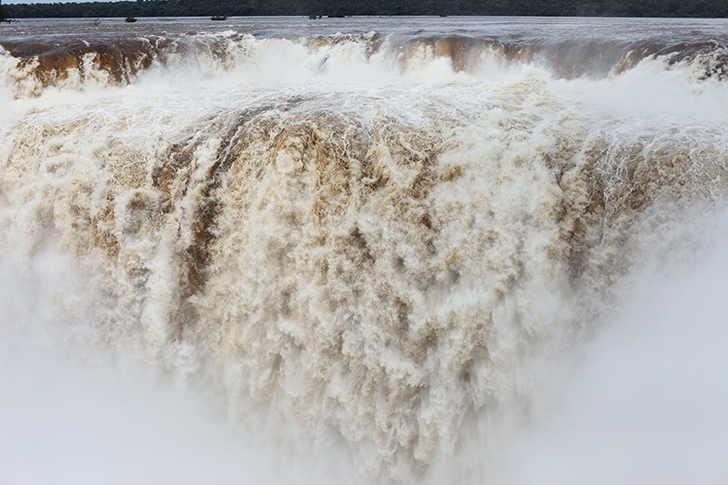These days the world is experiencing an unprecedented overload of photographs, a global glut of pictures. More and more are taken every day on smartphones and tablets. They zip around the world by the billion. When I went to Wolfgang Tillmans’s exhibition at Tate Modern, the galleries were full of people taking snaps of the exhibits. Some visitors posed to have their pictures taken in front of the larger ones — huge photographic prints of such diverse subjects as the waves of the Atlantic Ocean, a weed growing in a London garden and a hugely enlarged close-up of a
male bottom.
These, and a great many more, are shown in galleries with a messy, provisional look, more like a classroom or workshop than a conventional exhibition of art. It is informally, coolly contemporary: the installation is part of the message.
There are photographs all over the place: taped to the walls, in books and magazines lying on tables, dangling from bulldog clips, even occasionally hanging in frames like old-fashioned pictures. They come in all sizes, from very big to quite small, and in all manner of genres: abstract, document-ary, portrait, still life. In the last category is a study of Tillmans’s desk, which is moderately, though not excessively, cluttered with cigarettes, ashtrays, screens, sticky-tape dispensers and a bottle of beer. He obviously likes a bit of a jumble.
One takes the point about this messy installation — a Tillmans trademark. It emphasises that photographs are not simply just pictures to hang on a hook and admire.
Born in Germany in 1968, Tillmans was the first non-Briton to win the Turner Prize — in 2000 — and is also sometimes tagged as the first photographer to do so. It would be more accurate, though, to describe him as an artist, partly a conceptual one, who uses photographic media. He takes all sorts of pictures in quite traditional photographic genres, but simultaneously seems to want to take the medium to pieces and push it in unexpected directions.
What exactly are photographs? That’s a question that preoccupies David Hockney and there are signs that it intrigues Tillmans too. The darkroom equipment and materials can be used to do almost anything. There are even abstract photographic sculptures in his show, consisting of shiny photosensitive paper that has been exposed to light as it passes through a colour process, creating vivid hues of orange, green and turquoise. These objects are displayed in shallow boxes, folded and flexed, looking a bit like early Anthony Caros.
Another series of abstractions was made by developing the paper in water containing traces of silver salt and dirt. This causes stripes and fuzzy patches akin to the paintings of Rothko and Barnett Newman. Tillmans is evidently fascinated by the way in which such images — sometimes beautiful, almost meaningful — just generate themselves.
‘End of Broadcast’ (2014) consists of a massive print displaying — as the title suggests — a pixellated snow pattern on a TV. It looks black and white, but when you get close to it you discover that each little square is brightly coloured — the effect, apparently, of taking a digital photograph of a flat screen struggling to display an analogue signal. In other words, this blandly soothing pattern is simultaneously a metaphor for the dysfunctional chaos of modern media.
Other types of Tillmans photographs are much more orthodox. There is a nice room of portraits, which he does rather well. Often he focuses his camera on details of the world: a drain, car headlights as angry insect eyes, somebody’s neck, a young man standing in the street in Saudi Arabia. He contrasts such vignettes with epic vistas — recalling romantic 19th-century paintings — of surging seas, sunsets, the sky at night and a marvellous waterfall.
There are plenty more ingredients in the show — too many to list. Several I personally could have done without, especially the zone in which one can listen to a bland electronic band and watch a film of the artist dancing wearing only his underwear. But the most contemporary thing about this exhibition could be the way all sorts of stuff, successful and not, is muddled together. Perhaps that’s the reason for the title: it’s called Wolfgang Tillmans: 2017.






Comments